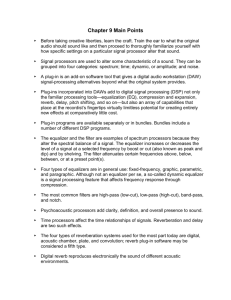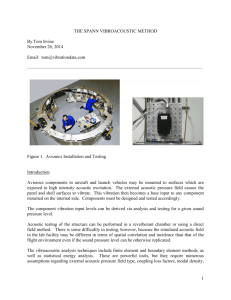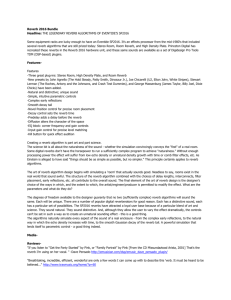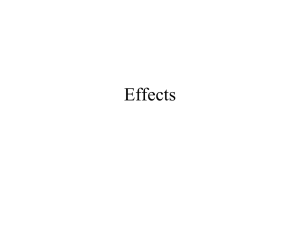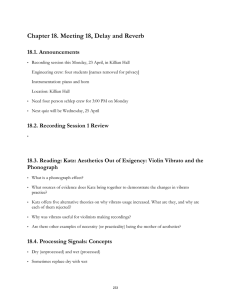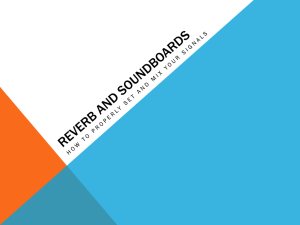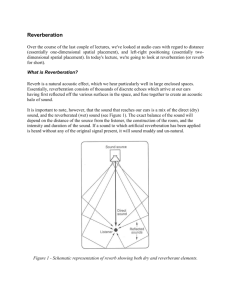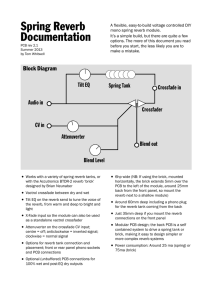AUD110.4 Blog - WordPress.com
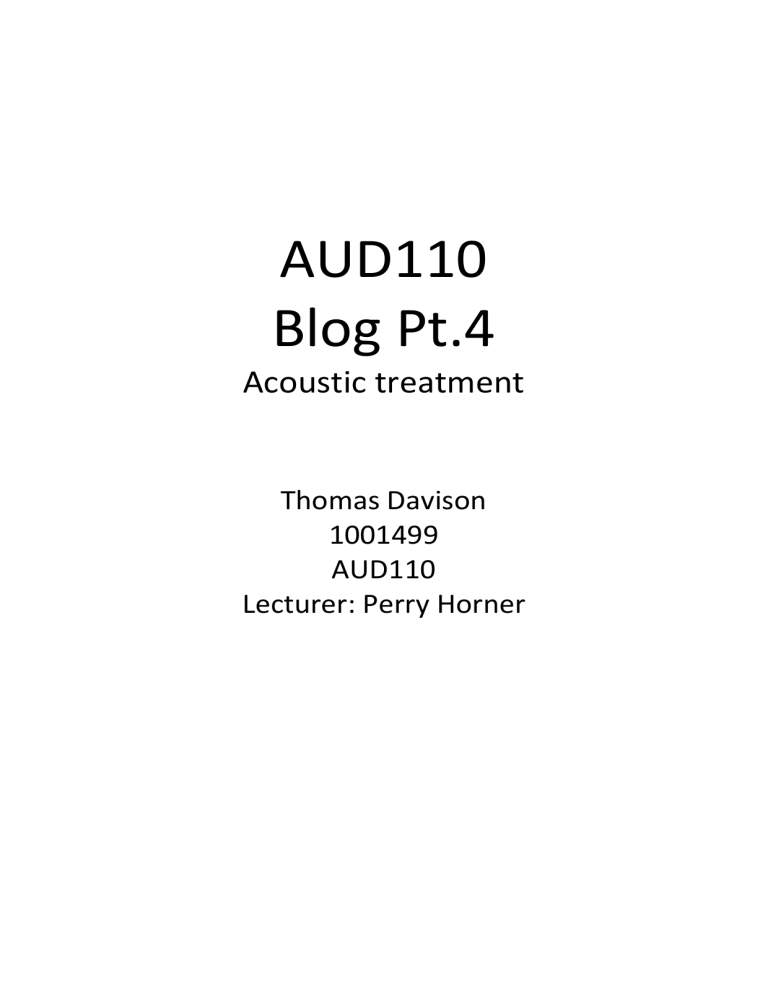
AUD110
Blog Pt.4
Acoustic treatment
Thomas Davison
1001499
AUD110
Lecturer: Perry Horner
Abstract
In this final blog I will explore the possibilities of acoustic treatment for a specific room I feel could serve as a studio space. I will use the RT-60 calculator provided by AUD110 to determine the reverb time of the room as it stands currently, and afterwards I will change some details in the calculator (theoretical acoustic treatments for the space) and recalculate the reverb time of the theoretical room.
Room Measurements
The room I have selected for my possible studio space is a normal room with plasterboard walls, carpet, and a glass window. The dimensions of all the materials in the room have been input into the RT-60 calculator and the results are as follows:
Analysis of Room RT-60.
Basic analysis; the average reverberation time of the room (without treatment) is 1.10 seconds. The octave band with the highest maximum reverb is the band at
2000Hz, with a maximum of 1.26 seconds(reverberation time table). The band with the minimum reverb time is the band at 250 Hz, with a time of 0.8 Seconds.
This means that the time of reverb in the room selected could be anywhere from
0.8 seconds to 1.26 seconds, according to the octave band table.
Now looking at the ‘Total Absorbtion/octave band” table, we can see the relation between the reverb time and the absorbtion (sabines) quite clearly. As the absorbtion increases the reverb time decreases. This is because more acoustic energy is being absorbed by the wall/floor material at those specific frequencies.
The absorbtion coefficients at the band 250Hz, for example, are on average the highest number in their row (refer to the table for visual aid). This is why the reverb time is lower, because the majority of the room is absorbing higher levels of acoustic energy at 250Hz.
In the reverse, the octave band 2kHz, has the highest reverb time at 1.26 seconds, and true to the theory, it has the lowest total absorption level of any band, on average.
Studio Space: Theoretical Treatment
My original idea for treating the space acoustically is to change the material of the walls to carpet, and to apply acoustic tiles around the room with an area equal to 10m 2 . The following results were calculated from the RT-60 calculator using the new measurements for acoustic treatments.
Discussion of Theoretical Studio Results
The new theoretical studio space which would be built upon the current existing one has very considerable improvements in terms of reverb time. If you’re goal is to limit the reverb in the room then the acoustic tiles and carpet on the walls will be quite suitable and relatively cost effective for more than halving the reverb time in the room.
When the octave tables are compared, you can see clearly the difference in all octaves across the table. The biggest difference in Reverb would be at the
2000Hz band, where the difference is from 1.26 seconds (untreated) to 0.32 seconds (treated), making the improvement close to a whole second in reverb decrease.
The total absorption in all areas of the octave band/absorption coefficient table has increased so much from the untreated version of the studio space, with the absorption rising the most in the higher bands from 1000Hz – 4000Hz. This is obviously due to the fact that because the carpet being placed on the walls has changed the absorption coefficients all across the table, and the original coefficients of the higher bands were lower than the other bands, then the increase in absorption is going to make the difference seem much larger.
Conclusion
In conclusion to this blog, the original space would be of moderate use as a studio. The average RT-60 is 1.10 seconds with most of the reverb occurring around the 2000Hz band. With the addition of simple carpet covering the walls and approximately 10m 2 of acoustic tiles, the RT-60 of the room drops dramatically, from 1.10 to only 0.49 seconds, with the 2000Hz octave band actually being decreased the most out of all the bands. If this was to be used as a studio space, the carpet around the walls and the acoustic tiles would be a fantastic start to building a highly productive recording and mixing space.
Reference list
Master handbook of acoustics. / F. Everest
5th ed. / F. Alton Everest, Ken C. Pohlmann. New York : McGraw-Hill c2009
"Sound System Engineering" 4th edition, Don Davis, Eugene Patronis, Pat Brown,
June 2013, page 215
AUD110.3 RT-60 calculator (provided)
